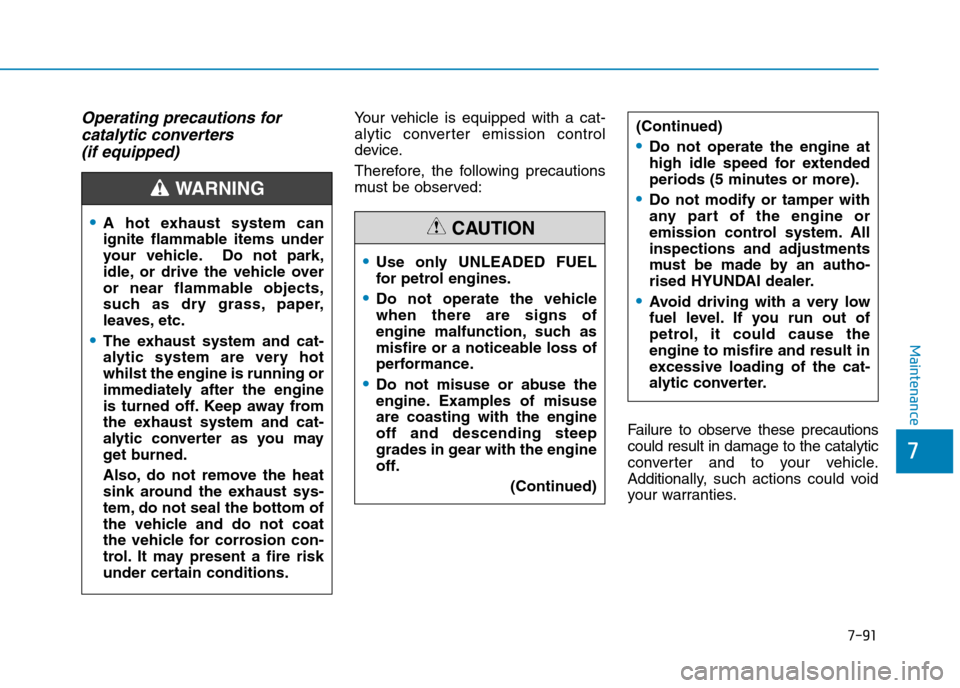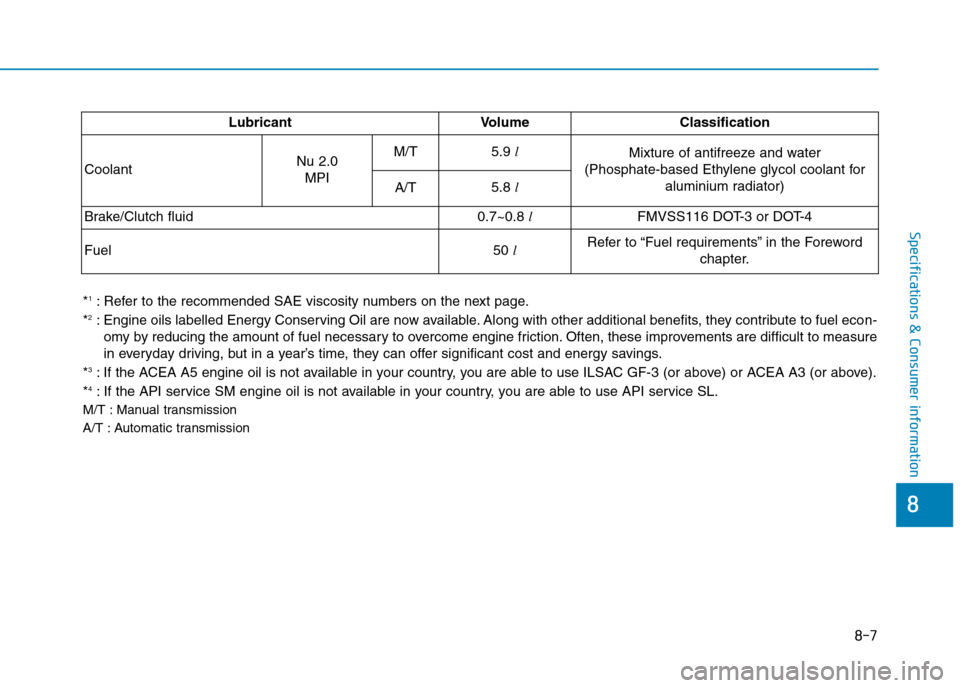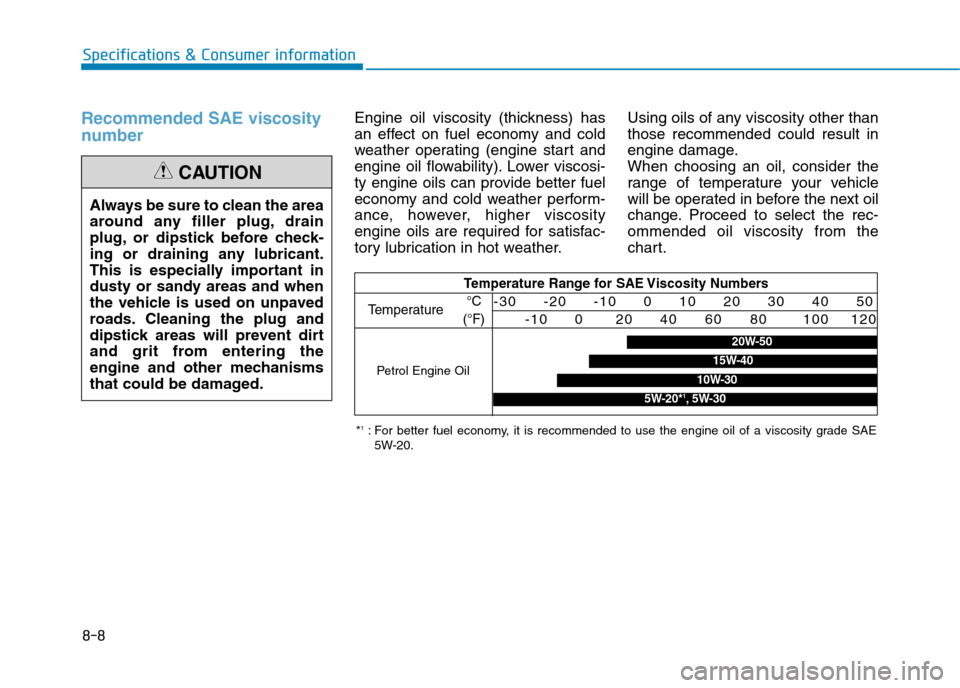Page 561 of 571

7-91
7
Maintenance
Operating precautions for
catalytic converters
(if equipped)
Yo u r v e h i c l e i s e q u i p p e d w i t h a c a t -
alytic converter emission control
device.
Therefore, the following precautions
must be observed:
Failure to obser ve these precautions
could result in damage to the catalytic
converter and to your vehicle.
Additionally, such actions could void
your warranties.
(Continued)
•Do not operate the engine at
high idle speed for extended
periods (5 minutes or more).
•Do not modify or tamper with
any part of the engine or
emission control system. All
inspections and adjustments
must be made by an autho-
rised HYUNDAI dealer.
•Avoid driving with a very low
fuel level. If you run out of
petrol, it could cause the
engine to misfire and result in
excessive loading of the cat-
alytic converter.
•Use only UNLEADED FUEL
for petrol engines.
•Do not operate the vehicle
when there are signs of
engine malfunction, such as
misfire or a noticeable loss of
performance.
•Do not misuse or abuse the
engine. Examples of misuse
are coasting with the engine
off and descending steep
grades in gear with the engine
off.
(Continued)
CAUTION•A hot exhaust system can
ignite flammable items under
your vehicle. Do not park,
idle, or drive the vehicle over
or near flammable objects,
such as dry grass, paper,
leaves, etc.
•The exhaust system and cat-
alytic system are very hot
whilst the engine is running or
immediately after the engine
is turned off. Keep away from
the exhaust system and cat-
alytic converter as you may
get burned.
Also, do not remove the heat
sink around the exhaust sys-
tem, do not seal the bottom of
the vehicle and do not coat
the vehicle for corrosion con-
trol. It may present a fire risk
under certain conditions.
WA R N I N G
Page 567 of 571
8-6
Specifications & Consumer information
RREECCOOMMMMEENNDDEEDD LLUUBBRRIICCAANNTTSS AANNDD CCAAPPAACCIITTIIEESS
To h e l p a c h i e v e p r o p e r e n g i n e a n d p o w e r t r a i n p e r f o r m a n c e a n d d u r a b i l i t y, u s e o n l y l u b r i c a n t s o f t h e p r o p e r q u a l i t y.
The correct lubricants also help promote engine efficiency that results in improved fuel economy.
These lubricants and fluids are recommended for use in your vehicle.
Lubricant Volume Classification
Engine oil *1*2(drain and refill)
RecommendsNu 2.0
MPI4.0l
API SM*4& ILSAC GF-4 (or above)
ACEA A5*3(or above)
Manual transmission fluidNu 2.0
MPI1.7~1.8
HK MTF 70W (SK)
SPIRAX S6 GHME 70W MTF (H.K.SHELL)
GS MTF HD 70W (GS CALTEX) (API GL-4, SAE 70W)
Automatic transmission fluidNu 2.0
MPI6.7 l
MICHANG ATF SP-IV,
SK ATF SP-IV,
NOCA ATF SP-IV,
HYUNDAI genuine ATF SP-IV
Page 568 of 571

8-7
8
Specifications & Consumer information
Lubricant Volume Classification
CoolantNu 2.0
MPI
M/T5.9 lMixture of antifreeze and water
(Phosphate-based Ethylene glycol coolant for
aluminium radiator)A/T5.8 l
Brake/Clutch fluid0.7~0.8 lFMVSS116 DOT-3 or DOT-4
Fuel50 lRefer to “Fuel requirements” in the Foreword
chapter.
*1:Refer to the recommended SAE viscosity numbers on the next page.
*2:Engine oils labelled Energy Conserving Oil are now available.Along with other additional benefits, they contribute to fuel econ-
omy by reducing the amount of fuel necessary to overcome engine friction. Often, these improvements are difficult to measure
in everyday driving, but in a year’s time, they can offer significant cost and energy savings.
*3:If the ACEA A5 engine oil is not available in your country, you are able to use ILSAC GF-3 (or above) or ACEA A3 (or above).
*4:If the API service SM engine oil is not available in your country, you are able to use API service SL.
M/T : Manual transmission
A/T : Automatic transmission
Page 569 of 571

8-8
Specifications & Consumer information
Recommended SAE viscosity
number
Engine oil viscosity (thickness) has
an effect on fuel economy and cold
weather operating (engine start and
engine oil flowability). Lower viscosi-
ty engine oils can provide better fuel
economy and cold weather perform-
ance, however, higher viscosity
engine oils are required for satisfac-
tory lubrication in hot weather.
Using oils of any viscosity other than
those recommended could result in
engine damage.
When choosing an oil, consider the
range of temperature your vehicle
will be operated in before the next oil
change. Proceed to select the rec-
ommended oil viscosity from the
chart.
Always be sure to clean the area
around any filler plug, drain
plug, or dipstick before check-
ing or draining any lubricant.
This is especially important in
dusty or sandy areas and when
the vehicle is used on unpaved
roads. Cleaning the plug and
dipstick areas will prevent dirt
and grit from entering the
engine and other mechanisms
that could be damaged.
CAUTION
*1:For better fuel economy, it is recommended to use the engine oil of a viscosity grade SAE5W-20.
Te m p e r a t u r e R a n g e fo r S A E V i s c o s i t y N u m b e rs
Te m p e r a t u r e
Petrol Engine Oil
°C
(°F)
-30 -20 -10 0 10 20 30 40 50
-10 0 20 40 60 80 100 120
20W-50
15W-40
10W-30
5W-20*1,5W-30